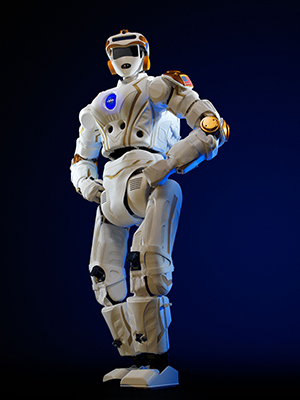MIT, Northeastern U Receive NASA Robots for Mars Mission Research

NASA's R5 robot (photo courtesy of NASA)
NASA has awarded prototypes of its R5
humanoid robot to researchers at the Massachusetts Institute of Technology (MIT) in
Cambridge, MA, and Northeastern
University in Boston, MA, for advanced research and development work.
The R5 is a six-foot, 290-pound humanoid robot known as
"Valkyrie" that NASA designed for use in future space missions. The
R5 could potentially serve on Mars in preparation for a manned mission to the
planet or as an assistant to human crew members.
The teams from MIT and Northeastern University were "chosen through a
competitive selection process from groups entered in the Defense Advanced Research Projects
Agency (DARPA) Robotics Challenge," according to a news release from NASA.
In addition to the R5 prototype, the teams will also receive up to $250,000 per
year for two years from NASA's Space Technology Mission Directive (STMD),
as well as access to on site and virtual technical support from NASA.
The team from MIT's Computer Science
and Artificial Intelligence Laboratory (CSAIL) was selected for its
proposal, "Robust Autonomy for Extreme Space Environments: Hosting R5 at MIT,"
led by principal investigator Russ Tedrake, and will use the prototype to
develop algorithms for the robot.
The team at Northeastern University was selected for its proposal,
"Accessible Testing on Humanoid-Robot-R5 and Evaluation of NASA Administered
(ATHENA) Space Robotics Challenge," led by principal investigator Taskin
Padir.
The principal investigators in both projects "will serve as critical
partners in NASA's upcoming Space Robotics Challenge," according to
information from NASA. The Space Robotics Challenge aims "to create better
software for dexterous humanoid robots used in space missions, giving them more
autonomy." The Space Robotics Challenge involves a virtual competition using
robotic simulations and a physical competition. The two upgraded R5 robots will
be used in the physical competition of the challenge.
About the Author
Leila Meyer is a technology writer based in British Columbia. She can be reached at [email protected].